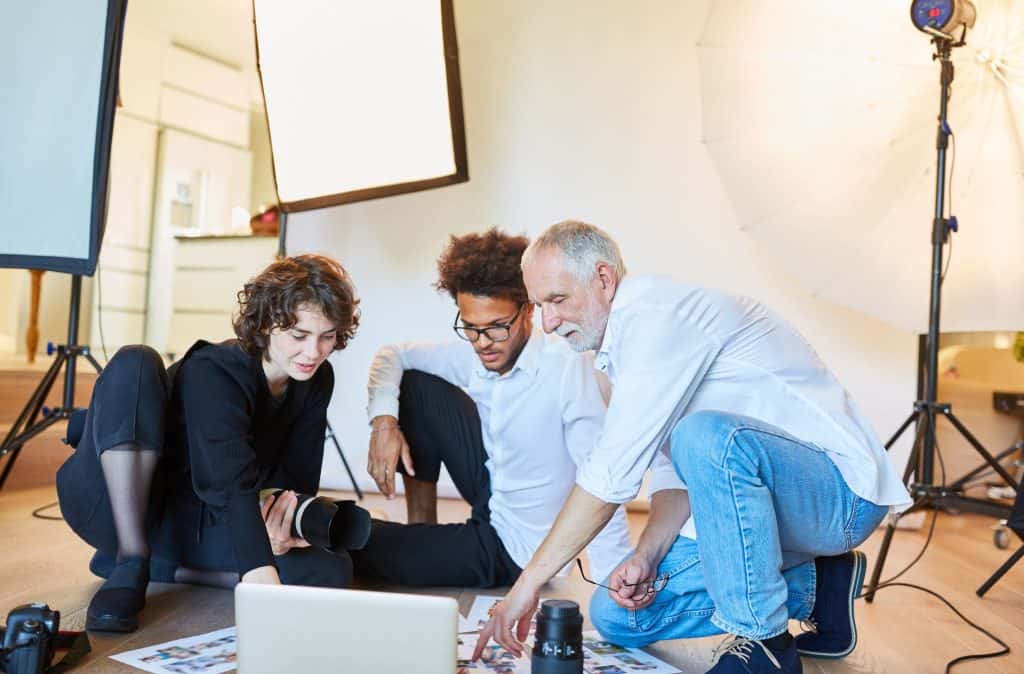Every eCommerce business needs crisp, clear, and eye-catching product images to maximize its lead generation and sales figures. There’s been an exponential increase in competition online over the past few years, not to mention competition between small online businesses and physical retailers as well.
Mastering the art of ecommerce product photography is the key to defining your brand and engaging your target audience with your eCommerce website.
The better you are equipped to portray your items with character, scale, dimension, and sharp details online, the better you will be able to build strong relationships with your customers. And at the same time, you’ll minimize the risk of complaints and returns.
The good news is that you don’t necessarily need top-level professional ecommerce product photography equipment to produce striking product images. A simple, quality at-home set-up and a post-production program can go a long way toward creating images that will have your target audience eager to click add to cart.
In this article, we’ll explore the best tips and tricks for creating ecommerce product photography that capture every detail, feature, texture and draw card of your eCommerce site’s offerings.
Let’s get ready to shoot!
Top Tips for Capturing Details and Texture
Details and texture are hugely important elements of eCommerce product photography. Customers want to get a real feel for what they’re buying, and highlighting these elements makes your products far more appealing.
Here’s how you can shoot the best photos that realistically represent your products:
Invest in a Tripod
Tripods are a must-have addition to your product photography kit, regardless of whether you’re using a DSLR camera or a smartphone to take your shots. Your tripod can stabilize your camera, allowing it to capture sharp and clear details throughout every image while reducing the blur. Investing in a tripod will keep the quality of your images consistent. Plus, it allows customers to zoom in and view finer details with ease.
If you’re using a DSLR camera with aperture control, experts recommend setting it to a high f-stop number such as f/11 or f/16, selected according to the strength of the lighting in your studio. This will aid you in bringing your subject into focus and ensuring that it’s the focal point of every photo.
Use a Sweep or Seamless Backdrop
Seamless backdrops are specifically designed to allow you to photograph products against white backdrops without showing seams between walls, counters and other surfaces. They keep your image backgrounds clean and consistent. This helps you to highlight your ecommerce product photography without any visual distractions.
Alternatively, you can use a sweep—a piece of plain white cardboard that curves against the wall to hide demarcation lines—to achieve the same effect. Remember to use cardboard that is matte rather than shiny. And, if you’re photographing larger products, you may need to invest in a stand-mounted sweep as well.
Opt for Reflectors and Diffusers
Lighting is essential when it comes to good ecommerce product photography, and you can manipulate and manage your light sources using tools like diffusers and reflectors. There are many affordable reflector kits available online. These include a range of different reflectors, and diffusers are also easy to find at a specialist photography store.
If you’re on a strict budget, you could create your own diffuser by hanging a sheer white curtain or cloth over your window when using natural light. Alternatively, you can use slices of black and white foam core to absorb and bounce light, which helps to optimize the lighting in a scene and reduce unwanted shadowing.
Try a Light Box
If your products are on the smaller side and you want to capture as many of their details as possible, a light box or light tent may help. These options allow you to create a studio light shooting effect without the traditional price tag.
Essentially, a light box is a box-shaped tent crafted from a sheer white material that effectively diffuses light. They reduce harsh shadows and allow for a more even and natural distribution of light on and around your products, thereby capturing even the smallest intricacies.

Shoot In-Context Images
In-context product photos are a great choice for eCommerce brands that have collections of products that work harmoniously together. Photographing these products within the context of their use helps to attract customers with realistic images from the catalog, while helping them to imagine how their lives would look with specific products in them.
You can highlight your products’ unique selling points by using models or props to show off your items in the context of their intended purpose. For instance, you could photograph models wearing your latest stocked jewelry items, or shoot your premium kitchenware range in a real kitchen setting for a more complete look and feel.
It’s not always necessary to take in-context photographs of your products. But sometimes, it can definitely help them stand out. When you’re photographing products that have intricate details and patterns, product-only shots with simple backgrounds and strong lighting may be a more suitable choice.
Take Advantage of Natural Light
Specialized lighting equipment is fantastic. However, it may not be financially viable for all eCommerce businesses—especially not young startups. Instead of paying significant sums for photography lights, try to use natural lighting where possible to effortlessly set up product shoots.
Spend some time experimenting with the position of your camera and tripod, windows, and products to find the ideal natural or direct light to produce eye-catching images. There should be no harsh light or dark shadows in your shots for the best results. This approach will help you to save time and money on ecommerce product photography, while still producing an impressive portfolio that will drive sales.
Use Image Editing Tools for Flawless Pictures
Once you’ve found the perfect lighting and positions and you have some detailed product images on hand, it’s recommended that you edit them before uploading them to your eCommerce site. Editing your photos can take some time and effort and it may require some practice. But the results will be worth it. However, there are some great free and cost-effective solutions like Snapseed, Canva and Pixlr available to help you create professional-looking images at little cost.
The best tools allow you to adjust the brightness, saturation and exposure of images, crop and rotate them, add and eliminate shadows, and scale their sharpness and focus where necessary.
Use a PC to Edit Your Images
While it’s definitely possible to take quality ecommerce product photography using a smartphone, a PC is almost always the better choice when it comes to editing images. Smartphones have smaller screens and limited usability compared to the larger screens and range of movements you can achieve with a personal computer.
Using a large monitor will also give you a clearer view of the details in your images. It will also give you a more accurate view of what your customers will see when they use their PCs to browse your website!
Get Creative
While there are a few golden rules to follow when mastering the art of professional product photography, you have free rein to express your creativity through your choice of image themes, product backdrop colors, props, models, and editing styles.
Developing a unique and consistent visual identity will help you to stand out from the competition and foster increased brand recognition among your target audiences. This approach also makes for more shareable social media content to give your social marketing strategies a boost.
Shoot For Shoppers
High-quality product photographs are a great way to build your brand’s visual identity, engage your target audiences online, and compel visitors to your eCommerce site to invest in what you have on offer.
Use our top tips and tricks mentioned above to improve the level of detail in your product images, size them correctly, and ensure that your products stand out in every photo you upload online.
Product Photography FAQs
What are the best free image editing apps for product photographs?
Snapseed, Pixlr, Canva and Fotor are a few of the best free options available for image editing, both on PCs and mobile devices.
How can I optimize my product photos?
Invest in great lighting or use strong natural lighting, use a tripod to stabilize your images, and edit your photos using a PC rather than a mobile device to create quality images with quick loading times.
Can I use ecommerce product photography to improve my website’s SEO?
Yes! Ensure that your images are fast to load on-site and include relevant keywords in descriptions and titles to give your on-site SEO a boost.
What is the best image size for product photographs?
Most eCommerce platforms recommend that your product images be at least 500×500 pixels in size to ensure good visibility and a high level of detail. Amazon requests that images be at least 1000×1000 pixels. Other eCommerce sites have even higher requirements. You can ensure that your images are optimized for all major platforms by ensuring that they are at least 2000×2000 pixels in size.
What are the key elements of a good product photo?
The best product images have consistent focal lengths and color palettes, minimal shadowing, logical positioning and context, and a striking level of saturation and exposure that does not distract the eye from the focal product.
Meta Title: Secret To Great eCommerceProduct Photography | Emily and Blair
Description: Are you looking to create eye-catching, detailed product images for your eCommerce business? Use these tips and tricks to perfect your product photography.



